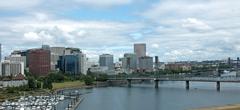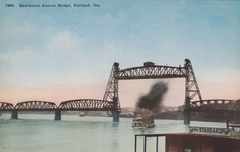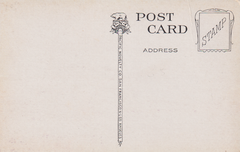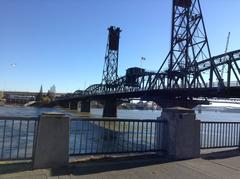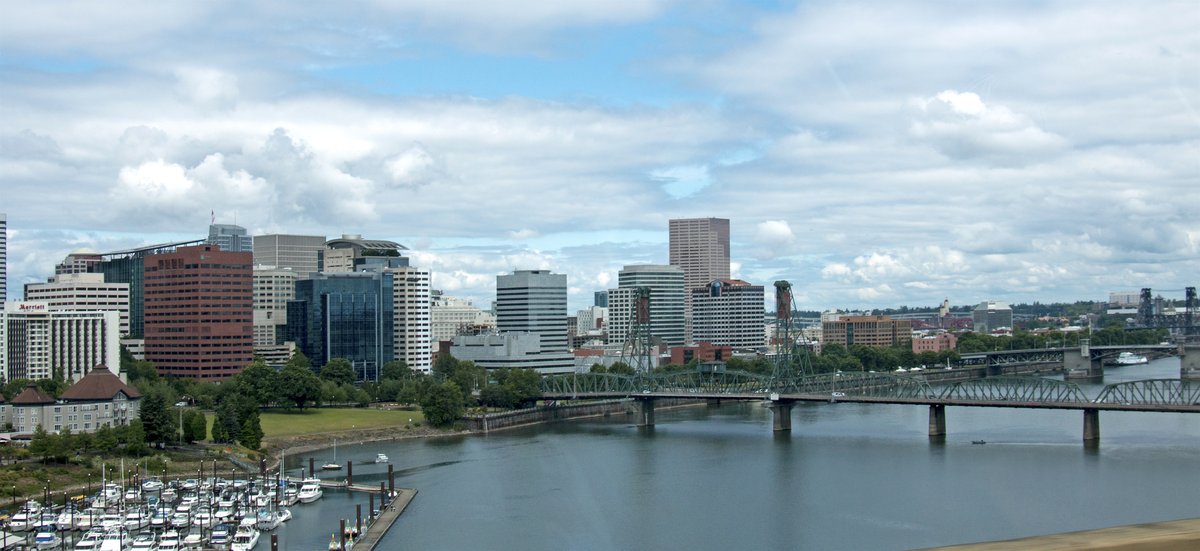
Hawthorne Bridge Visiting Hours, Tickets, and Portland Historical Sites Guide
Date: 15/06/2025
Introduction
The Hawthorne Bridge, completed in 1910, is a cornerstone of Portland, Oregon’s identity as “Bridge City.” Recognized as the oldest operating vertical-lift bridge in the United States, it is both a vital transportation link and a symbol of the city’s commitment to sustainable urban mobility. The bridge’s rich history, innovative engineering, and scenic views make it a must-visit destination for locals and tourists alike. This guide provides comprehensive information on the Hawthorne Bridge’s history, architecture, visitor access, travel tips, nearby attractions, and cultural significance, ensuring you have all the details to make the most of your visit (Portland Monthly, Travel Portland, Multnomah County).
Table of Contents
- Introduction
- History and Construction
- Architectural and Engineering Significance
- Role in Portland’s Urban Development
- Visiting the Hawthorne Bridge
- Notable Events and Preservation Efforts
- Frequently Asked Questions (FAQ)
- Visuals and Media
- Conclusion
- Official Sources
History and Construction
The Hawthorne Bridge was constructed in response to Portland’s early 20th-century growth, replacing the structurally unreliable Madison Street Bridge. Named after Dr. J.C. Hawthorne, a notable city physician, its creation marked a pivotal moment in Portland’s infrastructure development. Engineer firm Waddell & Harrington designed the bridge, and the Pennsylvania Steel Company completed its construction at a cost of $511,000, a significant investment for the era. Its completion in 1910 provided a reliable, multi-modal crossing that was crucial for the city’s expanding east and west sides (Portland Monthly).
Architectural and Engineering Significance
The Hawthorne Bridge stands out for its pioneering vertical-lift design, which was state-of-the-art at the time. Its main span can be raised 110 feet to allow river traffic, operated by counterweights and electric motors (originally steam-powered). The bridge measures 1,382 feet in total length with a 244-foot lift span, and features a robust steel truss structure. Its sidewalks—widened during the 1998–99 renovation—accommodate pedestrians, cyclists, and ensure accessibility for all.
Key engineering highlights include:
- Vertical-Lift Mechanism: Allows uninterrupted navigation for river vessels (Multnomah County).
- Pratt Through Truss: Provides strength and flexibility.
- Seismic Upgrades: Modern upgrades ensure resilience against earthquakes (Multnomah County).
The bridge’s distinctive green and yellow paint enhances its visibility and has become part of its iconic image.
Role in Portland’s Urban Development
The Hawthorne Bridge facilitates vital east-west connectivity, supporting neighborhood growth and commercial development on both sides of the river. Historically, it carried streetcars and horse-drawn wagons, evolving to accommodate cars, buses, cyclists, and pedestrians. Today, it is Oregon’s busiest bicycle and transit bridge, serving over 8,000 cyclists and 800 TriMet buses daily (Kiddle), reinforcing Portland’s reputation as a leader in sustainable, multi-modal transportation.
Visiting the Hawthorne Bridge
Visiting Hours and Access
The bridge is open 24/7 for pedestrians, cyclists, and vehicles. There is no admission fee or ticket required. Its sidewalks and bike lanes are accessible at all hours (Travel Portland).
Accessibility
Wide, smooth sidewalks and gentle ramps make the bridge fully accessible for wheelchairs, strollers, and mobility devices. The bridge’s approaches are designed for easy access from both riverbanks.
How to Get There
- By Public Transit: Multiple TriMet bus routes cross the bridge daily, and nearby stops serve both sides.
- By Bike/Foot: The bridge connects directly to the Eastbank Esplanade and Springwater Corridor, key urban trails for cyclists and pedestrians (Eastbank Esplanade PDF).
- By Car: Parking is available in downtown Portland and the Central Eastside, but spaces can be limited during peak times.
- By Streetcar: The Portland Streetcar runs close to the west end of the bridge.
Nearby Attractions
- Tom McCall Waterfront Park: Green space with river views and seasonal cherry blossoms.
- Eastbank Esplanade: A 1.5-mile riverfront trail ideal for walking, jogging, and cycling.
- Hawthorne District: Known for eclectic shops, dining, and music venues.
- Oregon Museum of Science and Industry (OMSI): Popular family attraction nearby.
- Other Bridges: Morrison, Marquam, and Tilikum Crossing offer additional viewpoints and architectural interest (Tracey & Michael).
Special Events
The bridge is featured in popular events like the annual Providence Bridge Pedal, when thousands of cyclists and pedestrians enjoy car-free access across Portland’s bridges (Travel Portland). Bridge lifts—up to 200 times monthly—are a unique spectacle for visitors.
Notable Events and Preservation Efforts
Renovations and Upgrades
Major rehabilitations in the 1940s, 1980s, and 1998–99 have preserved the bridge’s historic character while enhancing safety and accessibility. Upgrades include seismic retrofitting, replacement of the deck with lightweight concrete, modernization of the lift mechanism, and the introduction of LED lighting for energy efficiency (Multnomah County).
Cultural Recognition
The Hawthorne Bridge was added to the National Register of Historic Places in 2012, acknowledging its architectural and civic significance (Kiddle). Its silhouette is a favored subject in art, photography, and local media, and it has appeared in films such as “The Hunted” (2003).
Frequently Asked Questions (FAQ)
Q: What are the Hawthorne Bridge visiting hours?
A: The bridge is open 24/7 with no admission fees.
Q: Is the bridge wheelchair accessible?
A: Yes, it is fully accessible for wheelchairs, strollers, and mobility devices.
Q: Are tickets required to visit?
A: No tickets or permits are required.
Q: When can I see the bridge lifts?
A: Lifts occur up to 200 times monthly, typically in response to river traffic. Schedules are posted by the city.
Q: Are guided tours available?
A: No regular tours, but some local walking and cycling tours include the bridge. Check the Multnomah County website for updates on special events.
Q: What are some nearby attractions?
A: Tom McCall Waterfront Park, Eastbank Esplanade, OMSI, and the Hawthorne District.
Visuals and Media
For more photos and virtual tours, visit the official Travel Portland Hawthorne Bridge page.
Conclusion
The Hawthorne Bridge is an enduring symbol of Portland’s history, community spirit, and commitment to sustainable transportation. Open around the clock and free to access, it offers unmatched views of the city and river, connects vibrant neighborhoods, and stands as a testament to the city’s innovative spirit. Whether you’re crossing for your daily commute, taking a scenic stroll, or exploring Portland’s urban fabric, the Hawthorne Bridge is an essential part of the city’s story.
For more travel tips and up-to-date information, download the Audiala app, follow us on social media, and explore our related articles about Portland’s historic sites and cycling routes.
Official Sources and Further Reading
- The Amazing Design Stories Behind Portland’s Greatest Bridges, Portland Monthly
- Hawthorne Bridge, Multnomah County
- Hawthorne Bridge, Travel Portland
- Portland Bridge History, PDX Today
- Hawthorne Bridge, Kiddle
- Eastbank Esplanade, University of Washington
- Five Portland Bridges Worth Visiting, Tracey & Michael
- Portland Bridge Pedal Event, Travel Portland
- Hawthorne Bridge Facts, Oregon Essential
- Hawthorne Bridge History and Construction Facts, Study.com
- What Happened on Hawthorne and What’s Next, Bike Portland
